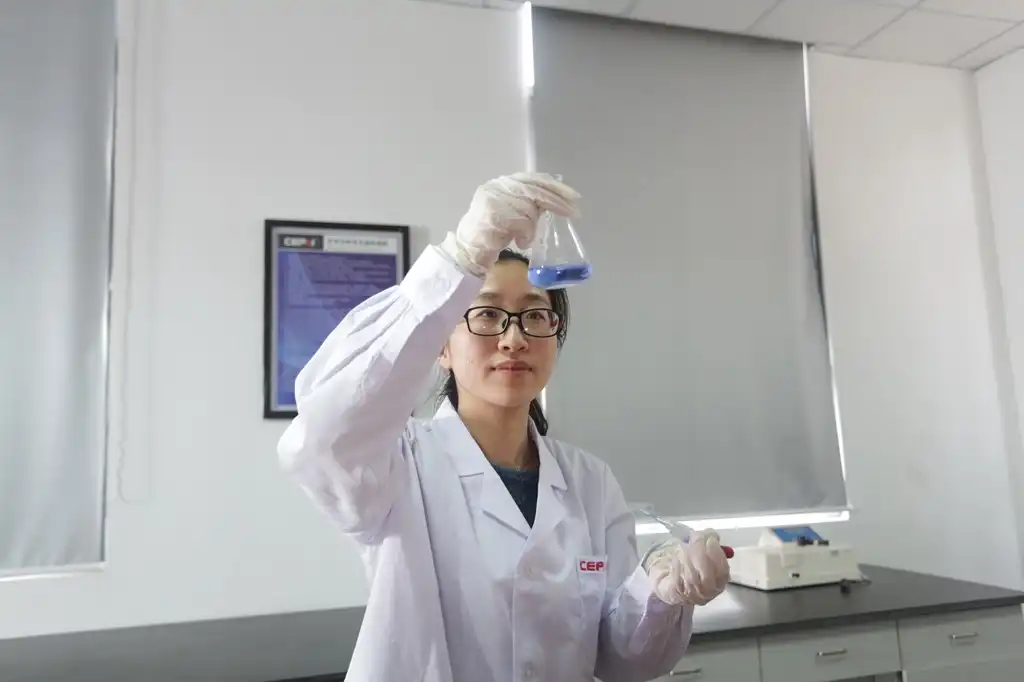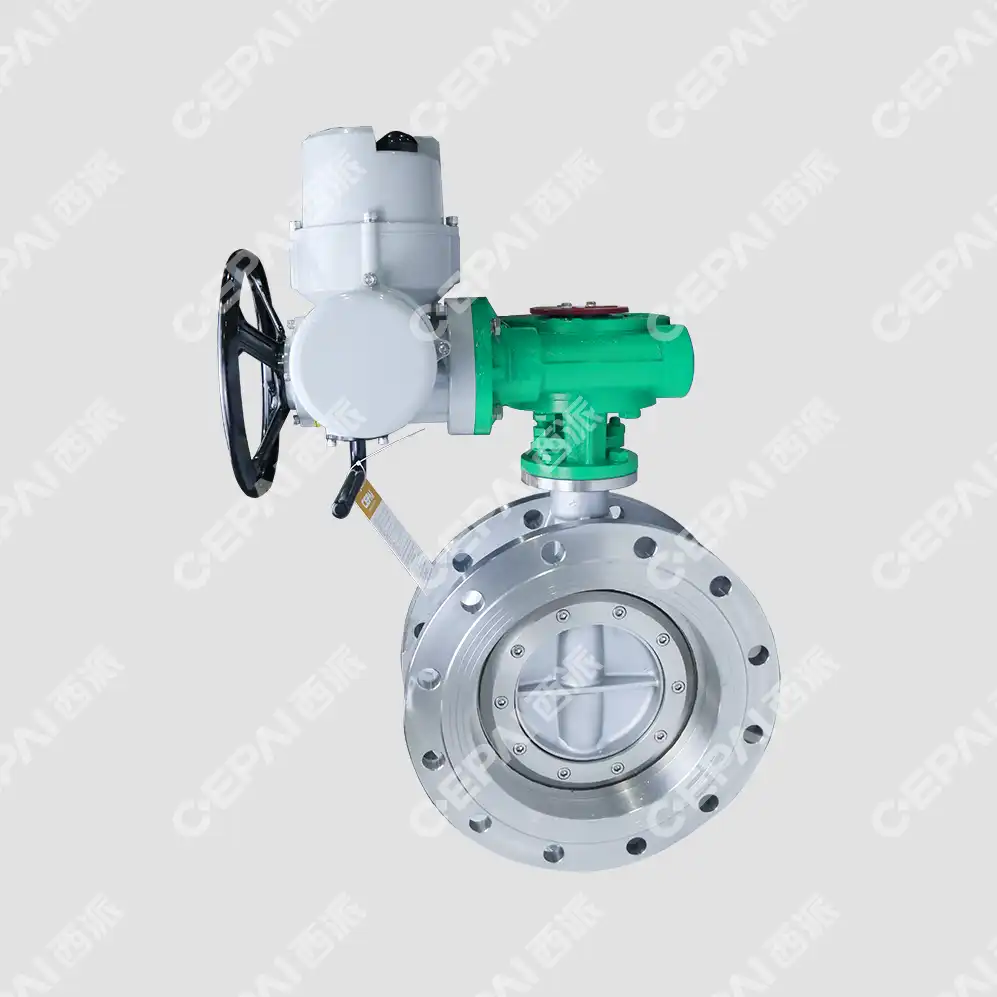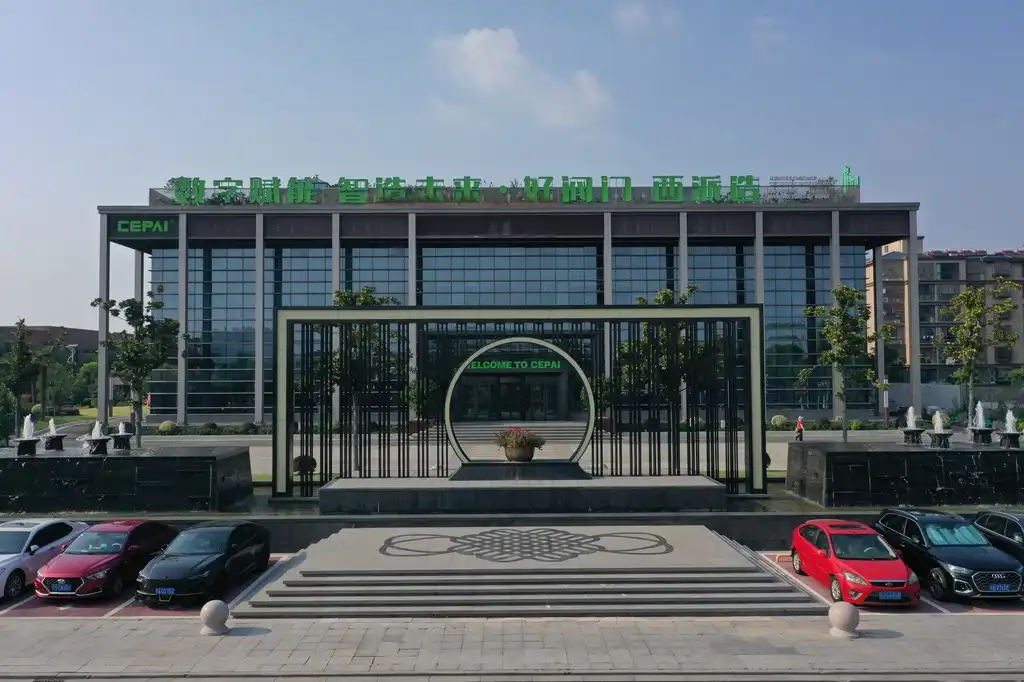Understanding Control Butterfly Valves and Positioners
Anatomy of a Control Butterfly Valve
Control butterfly valves are quarter-turn rotary valves that regulate flow through the use of a circular disc. The valve body houses this disc, which rotates on an axis perpendicular to the flow direction. When fully open, the disc aligns with the flow, offering minimal resistance. As the disc rotates towards the closed position, it gradually restricts flow. This design is very simple, which makes the valve reliable and easy to maintain.
Key components of a control butterfly valve include the valve body, disc, stem, and seat. The valve body provides the housing and connection points to the piping system. The disc, typically made of durable materials like stainless steel or specialized alloys, is the primary flow control element. The stem connects the disc to the actuation mechanism, while the seat ensures a tight seal when the valve is closed.
Introduction to Valve Positioners
Valve positioners are devices that enhance the precision and responsiveness of control valves such as the butterfly valve with positioner. They work by continuously monitoring the desired valve position (setpoint) and comparing it to the actual valve position. If there's a discrepancy, the positioner adjusts the actuator to achieve the correct position. This feedback loop makes sure that the valves are in the right place, even when there are outside changes or when the process conditions change.
Computer, electro-pneumatic, and pneumatic positioners are some of the types of current positioners available. Each type has its own benefits, but they all work to make valves work better and handle more accurately. Adding smart technologies to digital positioners makes them more useful in industrial control systems by letting them do more advanced diagnostics and communication.
Synergy Between Butterfly Valves and Positioners
The combination of control butterfly valves with positioners creates a powerful flow control solution. The butterfly valve's quarter-turn operation provides quick response times, while the positioner ensures precise positioning. This synergy works especially well in situations where changes need to be made often or where flow rates need to be tightly controlled.
Things that might affect how well the valve works, like friction, hysteresis, or changes in feed pressure, are taken into account by the positioner. The system can get better process control, less variation, and higher energy economy by keeping the disc in the right place. Advanced control techniques and remote operation capabilities can be more easily implemented with the incorporation of positioners.
Working Principles and Technical Specifications
Operational Mechanics of Control Butterfly Valves
Control butterfly valves operate on a simple yet effective principle. As the disc rotates within the valve body, it modulates the flow area, thereby controlling the flow rate. The relationship between disc angle and flow rate is non-linear, with the most significant changes in flow occurring in the middle range of disc rotation. Attaining the correct flow rates, particularly in partial opening positions, requires precise management due to this property.
Disc shape, seat design, and body layout are some of the parameters that impact the valve's performance. The sealing capabilities and torque needs can be enhanced using advanced disc profiles like double-offset or triple-offset designs. How well a valve seals and how well it handles various process fluids and temperatures are both impacted by the material and design of the seat.
Positioner Functionality and Control Loops
Positioners function as part of a closed-loop control system. They receive a setpoint signal, typically 4-20 mA or a digital signal, representing the desired valve position. The butterfly valve with positioner then compares this setpoint to the actual valve position, which is measured through various means such as Hall effect sensors or potentiometers. Based on this comparison, the positioner generates an output signal to drive the valve actuator, adjusting the valve position as needed.
The control loop in a positioner system involves several key elements: the input signal processing, position feedback mechanism, control algorithm, and output driver. Advanced positioners incorporate adaptive control algorithms that can optimize performance based on changing process conditions. Simplifying setup and maintenance operations, certain positioners also have self-calibration capabilities.

Technical Specifications and Performance Metrics
When specifying control butterfly valves with positioners, several technical parameters must be considered. The size, pressure rating, temperature range, and flow properties of the valve are all part of this. The rangeability and flow coefficient (Cv) of the valve are two of the most important specifications to consider when choosing a valve. For positioners, key specifications include input signal type, accuracy, resolution, and response time.
Performance metrics for these systems often include positioning accuracy, hysteresis, deadband, and repeatability. Present day positioners can accomplish situating correctnesses of 0.1% or superior, with quick reaction times in the arrange of milliseconds. The system's add up to execution is affected by prepare flow and other factors such as actuator speed and valve characteristics.
Applications and Industry-Specific Considerations
Industrial Applications of Control Butterfly Valves with Positioners
Control butterfly valves with positioners find widespread use across various industries due to their versatility and performance characteristics. Pipeline systems, refinery processes, and distribution networks all rely on these valves in the oil and gas sector. Applications like product blending and tank farm management benefit greatly from their capacity to manage high flow rates.
In the water and wastewater treatment industry, control butterfly valves with positioners are employed in flow control, distribution systems, and process control applications. Their ability to withstand corrosion and close up quickly makes them versatile enough to handle a wide range of chemicals and water types. In the power generation sector, these valves are used in systems that require precision flow control, such as those for cooling water, steam distribution, and turbine bypass.
Industry-Specific Challenges and Solutions
Control butterfly valves and positioners face various difficulties depending on the industry. In the chemical industry, for instance, valve materials must be carefully selected to withstand corrosive media and extreme temperatures. Here, specialized alloys or lined valves may be necessary. Valve designs and materials used in the food and beverage sector must adhere to stringent hygiene standards in order to avoid product contamination.
When used in environments with high temperatures, like the metallurgical sector, valve performance can be impacted by thermal expansion and material degradation. Use of high-temperature metals and specialist seat materials are potential solutions. For cryogenic applications in the LNG industry, valves must maintain their integrity and sealing capabilities at extremely low temperatures, requiring special design considerations and material selection.

Emerging Trends and Future Developments
As a result of new technologies and shifting business demands, the field of control butterfly valves and positioners is constantly developing. Enhanced diagnostic capabilities and predictive maintenance are made possible by the integration of smart technologies, which is a notable trend. Smart valves like this can share performance data in real-time, which means plant operations run more smoothly and downtime is avoided.
Another emerging trend is the development of energy-efficient valve designs and control strategies. This includes optimizing valve characteristics to reduce pressure drops and implementing advanced control algorithms in positioners to minimize energy consumption. Additionally, there's a growing focus on sustainability, with manufacturers exploring eco-friendly materials and production processes for valve components.
Conclusion
Since of their versatility, precision, and ease of utilize, control butterfly valves with positioners are an basic component of modern liquid control frameworks. Their critical part in guaranteeing tried and true and proficient forms is highlighted by their broad utilize in different segments. As innovation creates, these valve frameworks will as it were gotten to be more shrewdly and proficient, assist cementing their put as an indispensably portion of mechanical forms. To make strides these frameworks and keep up with the fast-paced world of mechanics, engineers and directors require to have a profound information of the thoughts, capabilities, and employments of fluid control frameworks.
Contact Us
For cutting-edge control butterfly valves with positioners that meet the highest standards of quality and performance, look no further than CEPAI Group. Our innovative solutions are designed to enhance your process efficiency and reliability. Contact us today at cepai@cepai.com to discover how our expertise can benefit your specific application.






